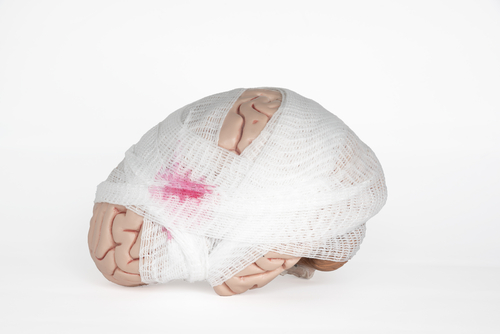When I think of post-concussion syndrome the first thing that flashes through my mind is sports injuries. Football players, hockey players, and downhill ski racers are just a few of the athletes frequently suffering from this condition.
Medically speaking, patients who have concussions are told that the brain is injured due to rebounding off of the skull. The quick acceleration and deceleration from hitting the head on the field, the ice, or hard-packed snow is like putting your sandwich in a plastic lunch box and shaking it up.
While the initial injury indeed may damage brain tissue, it is this doctor’s belief that there is more to this story than the brain injury itself. I would like for you to hear what some patients are saying about Upper Cervical care and post-concussion syndrome.
Afterward, I would like to explain why anyone who has had a concussion should not only be seeking medical care but, should also consult a doctor who is specially trained to assess the role that the upper two bones in the neck have on overall body health. Even how they can be a main player in the symptoms that someone feels long after a concussion.
Skull and Upper Cervical Care Spine Alignment In order to understand why the upper neck is a region to be reckoned with in these injuries is simple: the head weighs on average 10-13 pounds and it rests on the first bone in the neck that weighs 2 ounces.
While wonderfully engineered by nature this region of the spine is precariously built and it is susceptible to structural damage when an injury big enough to cause concussion results. What makes this part of human anatomy important and why should someone who has had a concussion seek the help of an upper cervical doctor?
Your brainstem is the part of the central nervous system that is responsible for controlling most of the functions in the body you do not operate: blood pressure, muscle tone regulation, thermoregulation, cardiac function, respiratory function, and more.
Your brainstem is literally what runs the show neurologically speaking. Because of its proximity to the atlas and axis(first two cervical vertebrae), it should be an area of focus for those that have sustained head injuries.
Not only does the brain receive damage but the upper cervical spine structure is also damaged from quick, sudden changes in acceleration and deceleration. More specifically speaking, when someone sustains a head injury, the cervical spine joints, which are protected by a ligament called a joint capsule, can tear, lose their proper alignment, and their normal motion.
When the joints in the upper cervical spine are injured, it predisposes the body to adapt structurally. Usually, the normal cervical curvature is lost, and in more severe cases, reverses. Over time this causes tensile stress on the spinal cord and brainstem.
This postural fault causes the body to malfunction, and, because the brainstem controls most basic functions in the body, it can lead to a whole host of health problems that are commonly referred to as ‘post-concussion syndrome. Post-Concussion Syndrome: How Chiropractors Can Help
We routinely see people who have been in traumas that predate their chronic health issues. Unfortunately, many of these people suffer for years before they find help. If you know someone who has been in head trauma and is suffering years later with headaches, cognitive fog, insomnia, short-term memory problems, tinnitus, and other symptoms that just won’t seem to go away, it may be that their upper neck is at fault.

